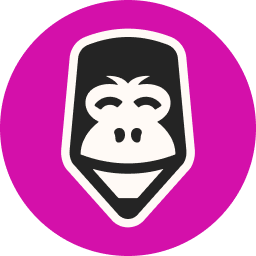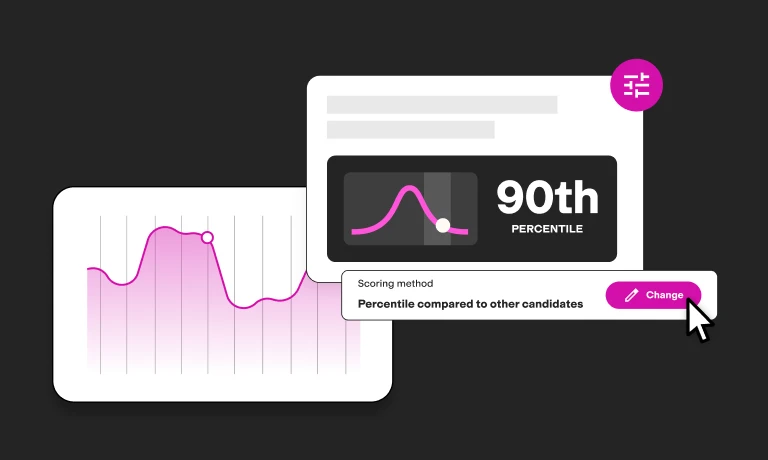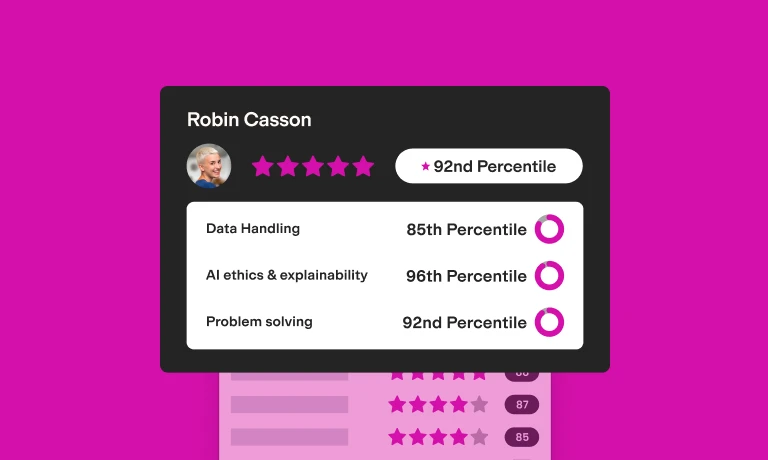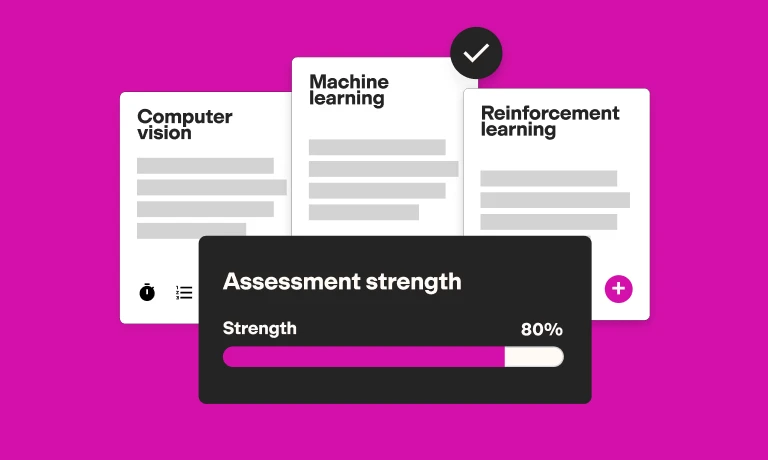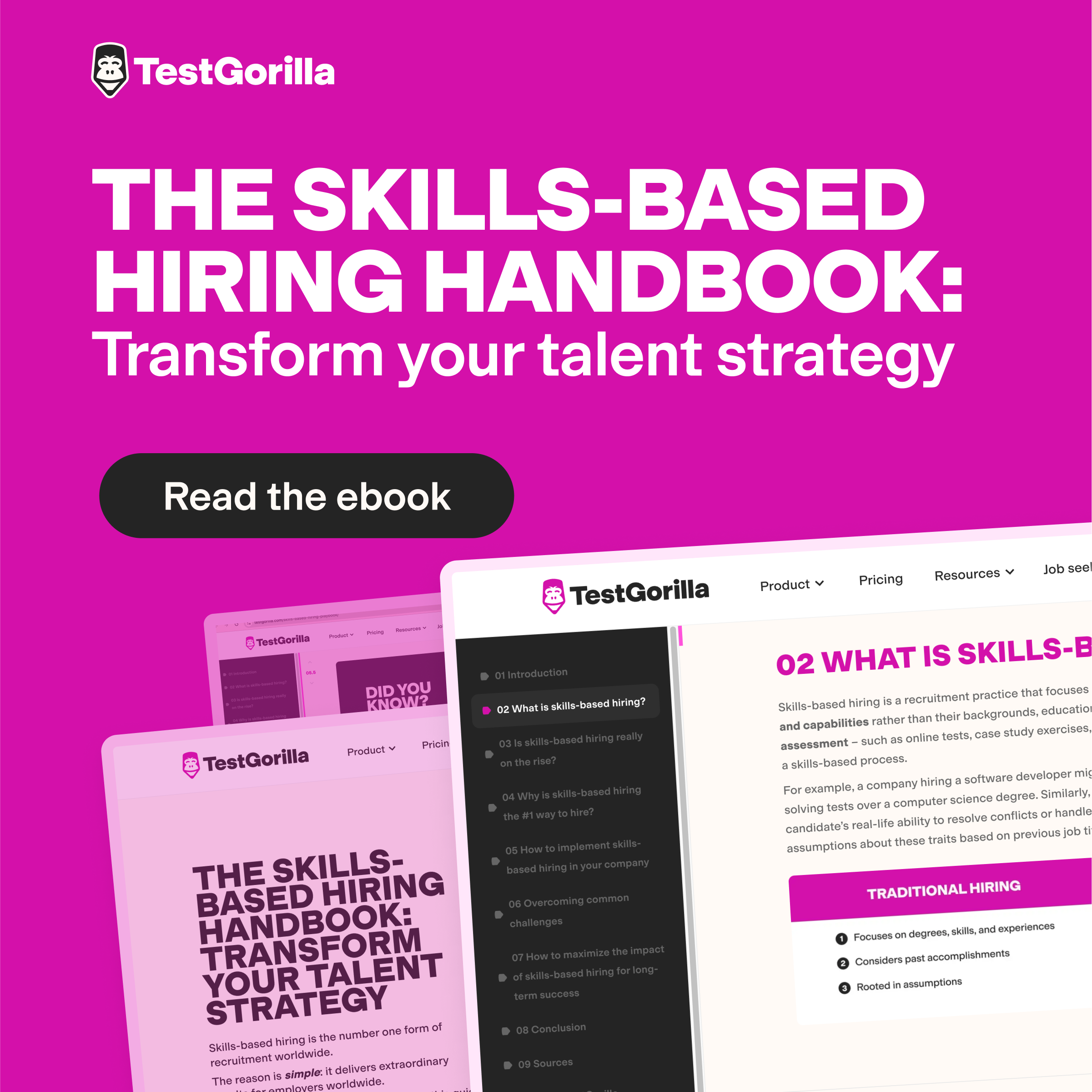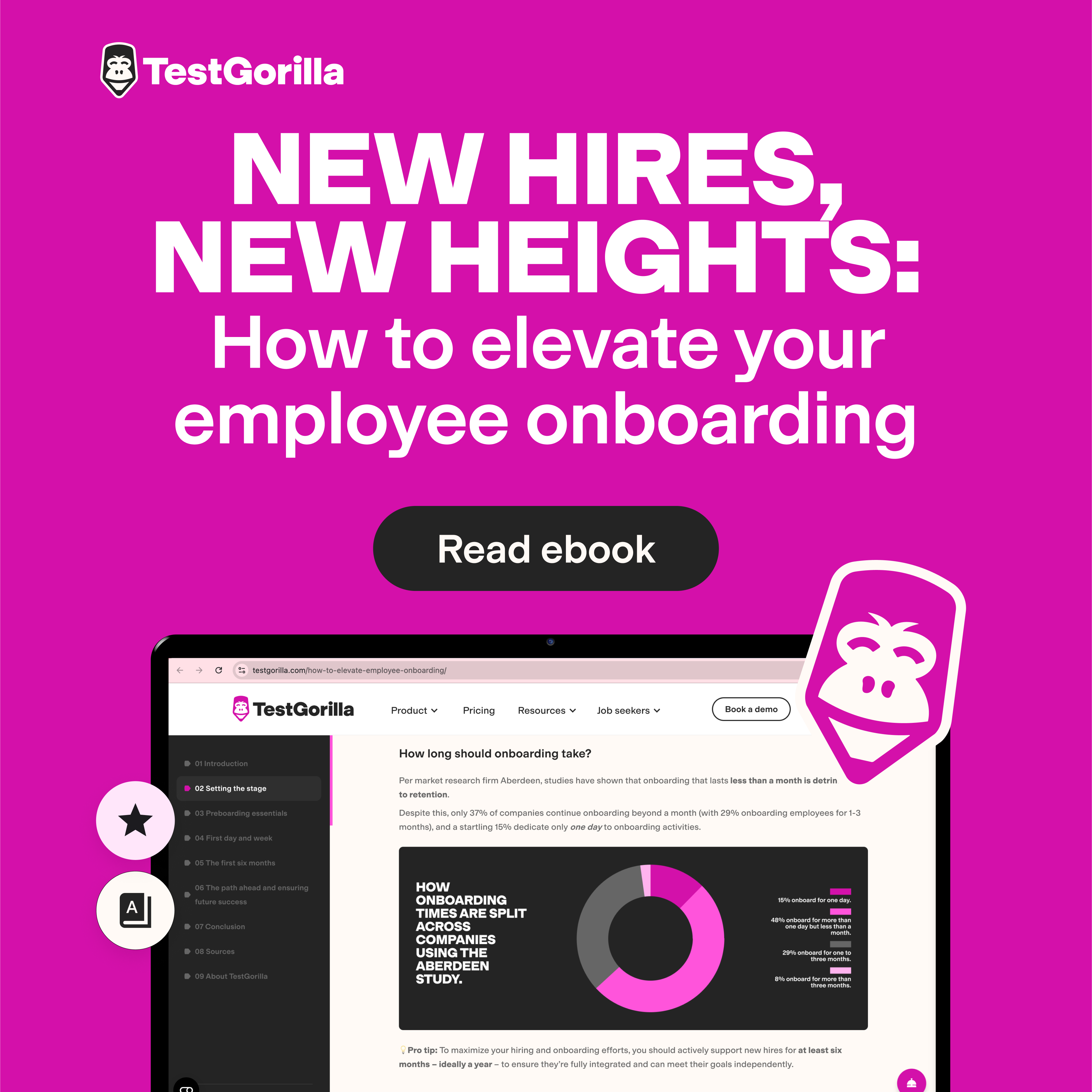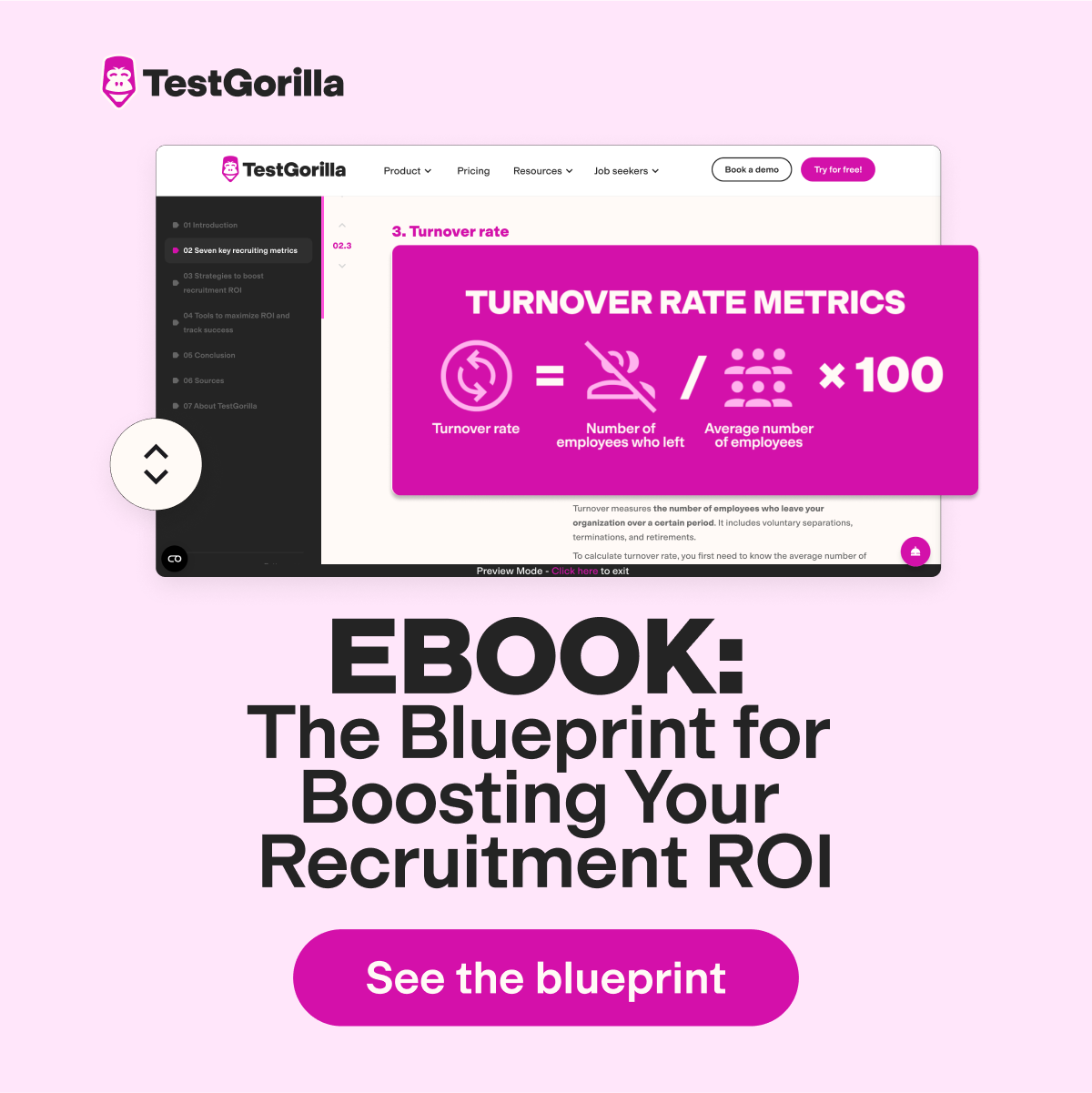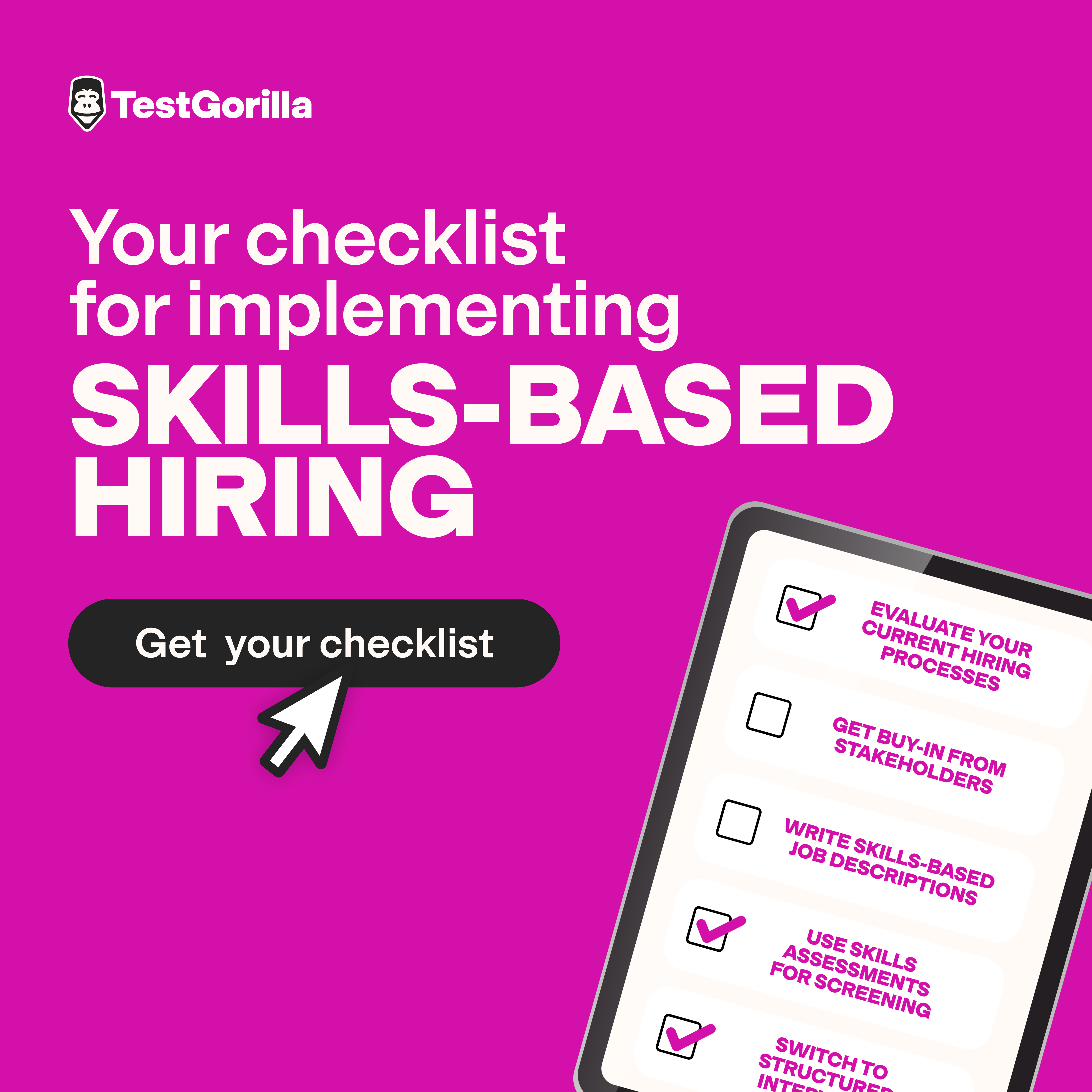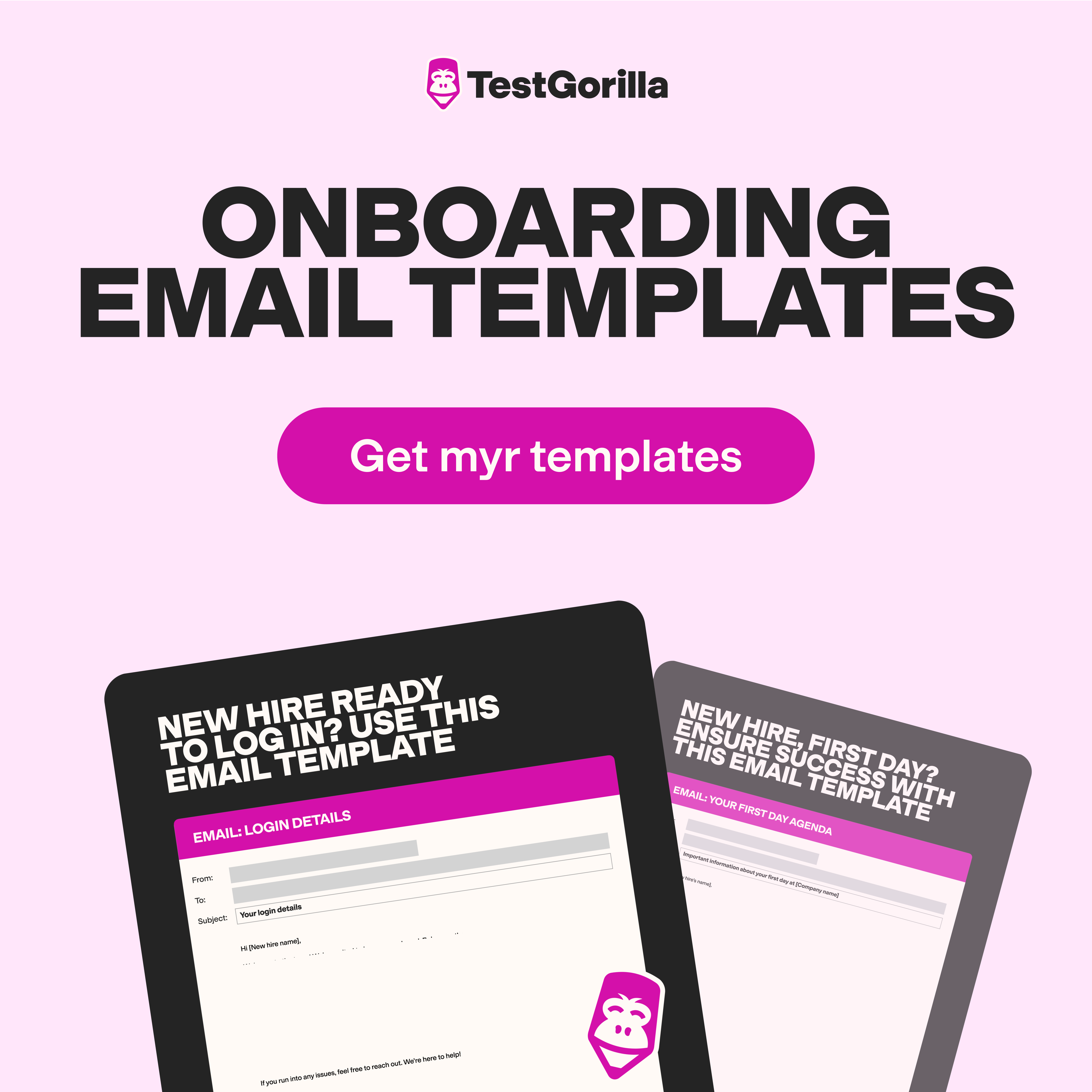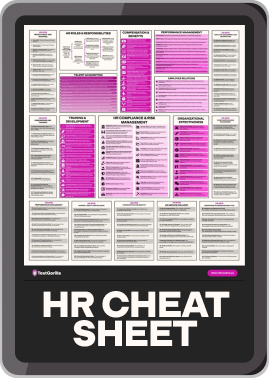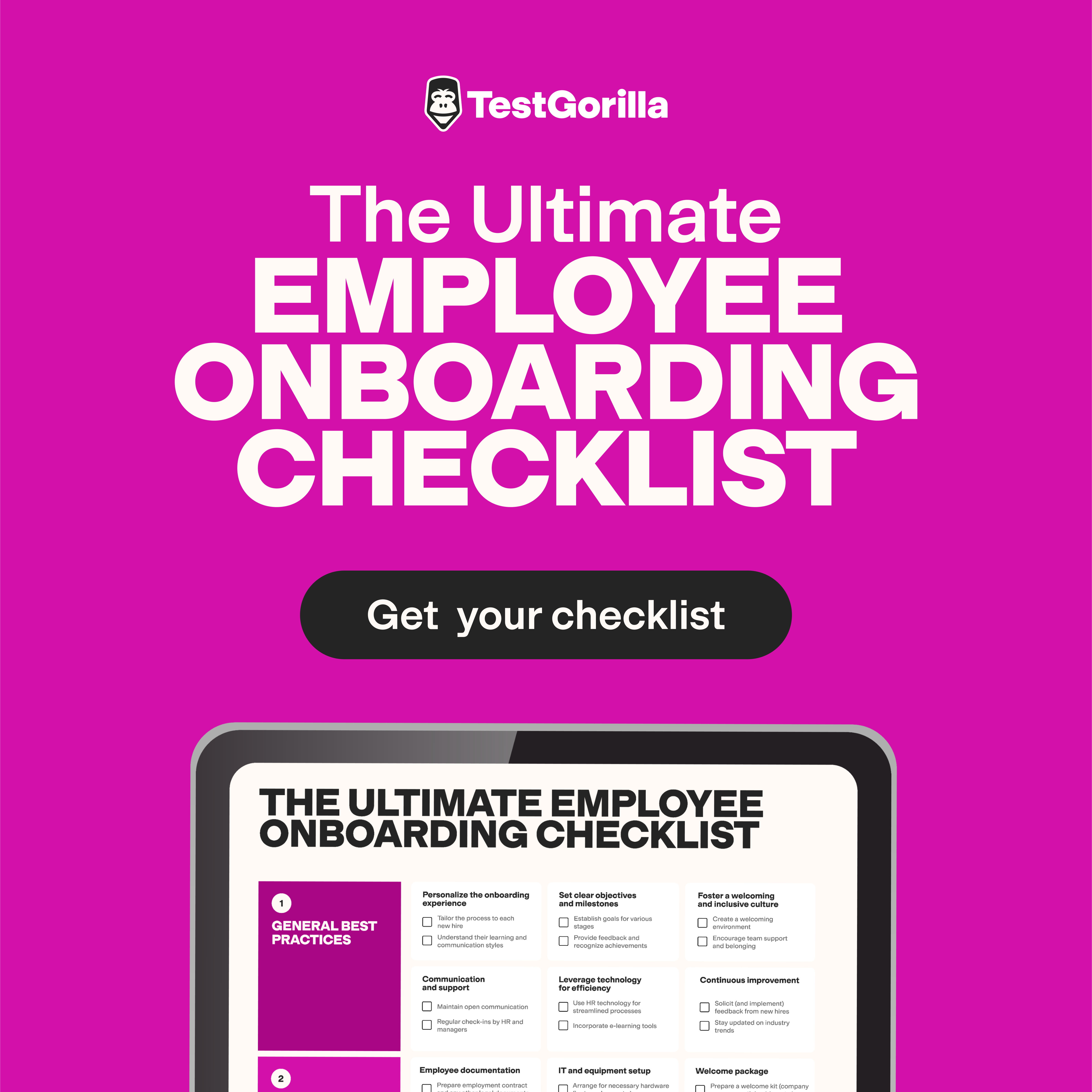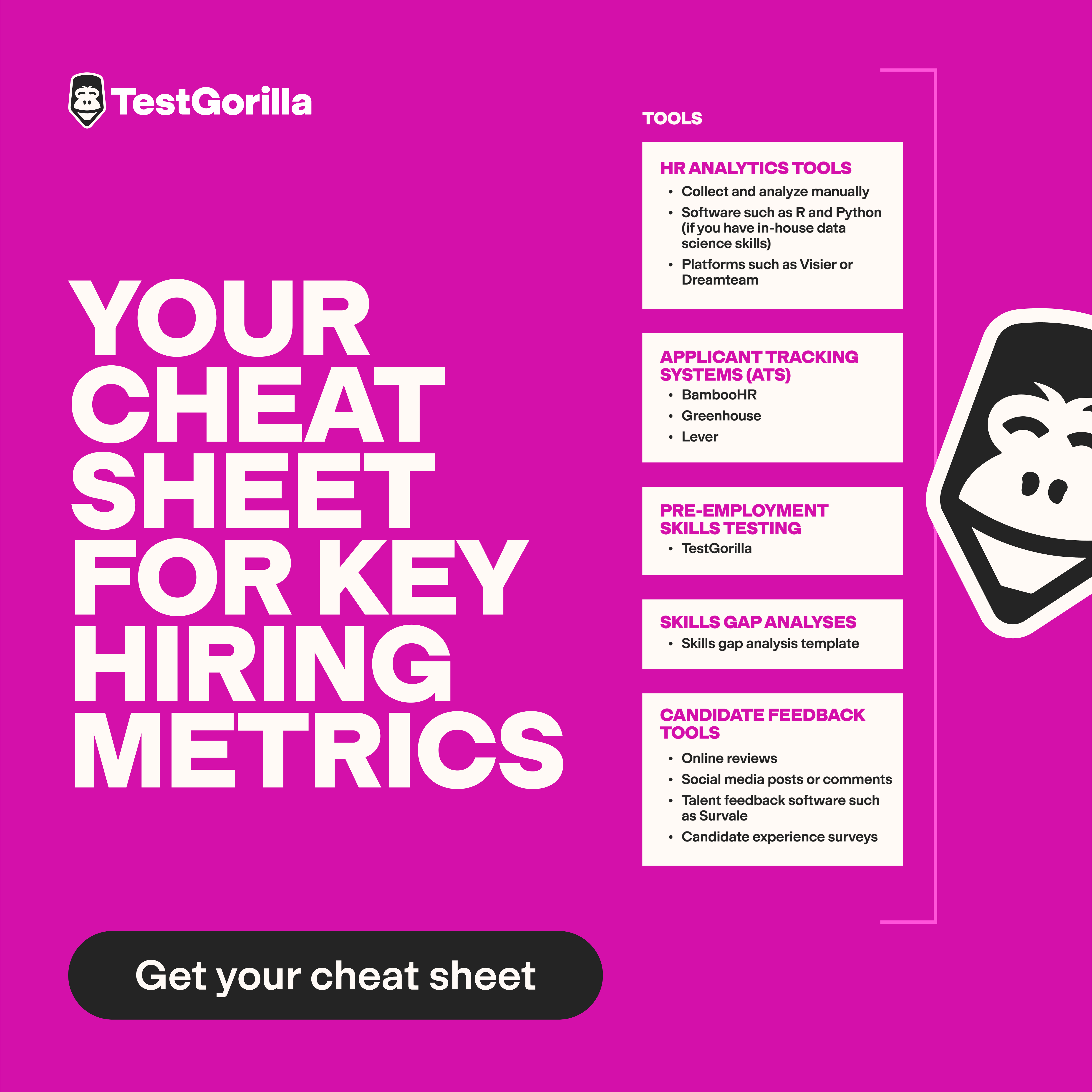What is learning agility? Insight, examples, and assessments
Let’s say you recently hired a new team of professionals who passed all your interviews with flying colors. However, a year in, some are struggling with new challenges as your business evolves and focuses on a new niche. How is this possible if they communicate well and pass all your skill tests?
Chances are, you’ve hired people who lack the learning agility to adapt to changing demands. Without learning agility in the workplace, your company risks stagnation.
Below, we explore the definition of learning agility, why experts believe it’s important, and how you can measure it.
Table of contents
- What is learning agility?
- Why is learning agility important?
- What does learning agility look like in different roles and industries?
- How to measure learning agility in the workplace: Methods and techniques
- Use TestGorilla to build learning agility assessments and measure performance
- How to build learning agility
- Develop learning agility in your workforce with skills testing
- Learning agility FAQs
What is learning agility?
Learning agility is the ability to pick up new knowledge and skills and apply them to different situations and problems. Learning-agile people adapt well to changing work environments. They use insight and intuition to critically and creatively answer complex problems.
In other words, these employees are comfortable being uncomfortable, thriving on learning from unfamiliar situations, and seeking out new challenges.
What do experts say about learning agility?
Experts largely credit the conventional learning agility definition to Michael Lombardo and Robert Eichinger, who suggested measuring agility potential could be improved by considering:
“...(the) willingness and ability to learn new competencies in order to perform under first-time, tough, or different conditions.”
The Korn Ferry organization, meanwhile, breaks down Lombardo and Eichinger’s concept into five main learning agility examples, which we explore below.
Korn Ferry’s Steve Newhall specifically explores learning agility in leadership development.
Success in an increasingly unpredictable business landscape requires leadership styles and skills that differ markedly from those that dominated in a more stable business environment. Executives must now have the fluidity to manage disruption and the agility to adapt their strategies.
He’s right, but we can apply that to more than agility in leadership and executive decisions.
These days, even the average team player must be technically adept, willing, and prepared to apply knowledge and skills to different demands and challenges.
Some experts measure specific skills by their “half-life,” the theoretical amount of time it takes for a skill to lose half its value. Each successive half-life continuously cuts the value in half from the previous outcome.
As part of its Learning Agility Matrix report, Mettl’s experts reveal that the typical half-life of a learned skill in 1984 was around 30 years. In 2018, it had reduced to just five years. This means professionals must be more flexible and willing to learn than ever or risk falling behind their peers.
Hiring companies face the same challenge. They must hire people with agile learning attitudes and skills or risk stagnation.
Mettl’s researchers define learning agility by splitting learners into four trainability types – average, latent, high potential, and enthusiasts – based on ability/intelligence and intent/willingness:
For example, Mettl’s researchers claim you might need an “enthusiast” when hiring for creative and media roles. That’s someone who has an average learning ability but is nonetheless passionate about learning and development.
“High potential” learners are those with remarkable scores on skill tests and who show a genuine thirst for growth and continuous learning. Mettl’s experts claim they’re ideal candidates for management and leadership roles.
What are the 5 factors of learning agility?
Korn Ferry suggests breaking agility into five core factors. Let’s explore them in detail.
1. Mental agility
Mental agility refers to thinking critically, gathering information quickly, and applying knowledge to real-life scenarios. Learning-agile individuals welcome complexity and thrive on analyzing situations.
2. Change agility
Learning-agile people are highly curious, experimental, and ambitious. They approach change positively, calmly, and inquisitively, and they’re excited about experimenting with transformation.
3. People agility
Learning-agile people show emotional intelligence, are open-minded toward others, and want to understand and build healthy relationships with them. As Korn Ferry states, people-agile professionals bring out the best in others.
4. Results agility
Being learning agile means being results-oriented. Agile professionals work toward positive results even amid large-scale changes and challenges. They respond well to pressure and thrive when working on difficult tasks and overcoming obstacles.
5. Self-awareness
Learning-agile people are highly self-aware. This is a rare quality: It’s been estimated that only 10% to 15% of people have true self-awareness. Those with learning agility know themselves well, understand their strengths and weaknesses, and adapt well to challenging situations. They also comprehend that there’s always more to learn and are confident enough to appreciate and use feedback.
Why is learning agility important?
Across all industries, measuring learning agility:
Contributes to higher performance
Helps you understand your workforce better
Supports more flexible processes
Optimizes talent management
Keeps organizations up to pace with competitors
Promotes more creative, resilient, and inspiring leaders
Without agile workers, companies stagnate and never evolve with demand.
They must roll with changing market conditions by developing new products, trying bold new strategies, and prioritizing emerging skills and learning opportunities.
LinkedIn's 2023 Workplace Learning Report reveals that average skill sets have changed by 25% since measured in 2015. Measuring learning agility, therefore, is more important than ever. Doing so shows us how effectively an individual can acquire and apply new knowledge, skills, and experiences.
By assessing this agility, you can identify which employees thrive in changing environments and those who need more support. You’re then better placed to identify candidates who can help drive organizational success.
An agile workforce is likely to retain employees, too. The more agile workers are, the better prepared and more motivated they are to move into other roles in a business.
What’s more, learning-agile leaders are resilient. They can guide companies through unexpected disruptions by pivoting to new strategies and opportunities based on previous experience.
The best insights on HR and recruitment, delivered to your inbox.
Biweekly updates. No spam. Unsubscribe any time.
What does learning agility look like in different roles and industries?
Let's apply Korn Ferry's learning agility definition to some different scenarios.
Web design and content production
Google's search algorithms dictate the web design industry. That means industry specialists, such as SEO managers, content writers, and programmers, must always be ready to pivot and relearn the algorithm’s new priorities and metrics.
Take Google's ongoing commitment to "Helpful Content," where the search engine ranks content higher when it's genuinely relevant and useful for searchers' needs. Google’s changes meant that companies hiring writers needed experts who were willing to try new strategies and change direction quickly to help their web content rank higher.
Finance and banking
Finance service providers are always striving to adapt to customer and technological demands.
During the COVID-19 pandemic, the status quo shifted when providers experienced a major migration to digitization, with fintech app usage increasing by 72% in Europe.
Banking employees need to be technologically savvy and mathematically astute. An agile worker in finance and fintech is ready to support customers with technical difficulties, upsell new products, and give money growth advice.
In addition, salespeople in the banking industry tailor packages to different financial needs and find creative selling propositions for older products.
Logistics and delivery
The modern supply chain runs at a breakneck pace. After all, we live in a world where Amazon can deliver items the same day a customer orders them.
Therefore, logistics and delivery firms rely on people who can quickly and critically apply their knowledge from one case to another.
This was exacerbated, again, by the pandemic. From 2020, bulk-buying of household goods increased dramatically due to lockdown conditions. Logistics experts were under extra pressure to process orders and complete deliveries accurately and speedily to keep up with demand.
Therefore, industry experts needed to develop learning agility by adapting to new automation systems and thinking critically about fulfilling urgent orders, planning delivery routes, and collaborating with others.
How to measure learning agility in the workplace: Methods and techniques
Let’s go beyond “what is learning agility” and explore how you can measure it in your own workplace.
Learning agility examples and indicators
According to David Hoff and Warner Burke in their book “Developing Learning Agility: Using the Burke Assessments,” there are nine indicators of high learning agility:
Flexibility: Showing adaptability to new situations, proposing novel ideas, and remaining open to new ways of doing things
Speed: Being quick to assess how well an action benefits an organization, acting on new ideas, and moving on from failure
Experimenting: Showing eagerness to try different ways of working
Performance risk-taking: A willingness to take risks to improve performance
Interpersonal risk-taking: Learning from others, readily admitting mistakes, and overcoming difficulties
Collaboration: Working well with others, understanding how their team members’ skills complement their own, and adapting to others’ working styles
Feedback seeking: Thriving on feedback from others and applying it to boost performance
Information gathering: Quickly seeking out information and being eager to boost one’s existing knowledge
Reflecting: Slowing down and evaluating past performance, failures, and successes to help adjust processes
The 3 methods for measuring learning agility in leadership and the workplace
There are three ways you can measure learning agility in leadership, candidates, and existing employees:
Skills testing and assessments
Learning agility interview questions
Performance reviews
Let’s break these down.
1. Skills testing and assessments
Learning agility, by definition, is made up of several different skills. Therefore, it’s a good practice to use skills testing to assess candidates’ level of agility.
Let’s run through some of the best tests skills-based organizations use to hire more adaptable workforces, breaking them down into two categories, cognitive abilities and personality traits.
1) Cognitive abilities: Cognitive skills cover mental abilities such as processing, understanding, and applying new information and ideas.
These abilities help learners to quickly and accurately process information, make decisions, and adjust their approach. When testing for learning agility, assess candidates for the following skills:
A Critical Thinking test reveals how well they can solve logical problems and think analytically
A Problem Solving test shows you how effectively applicants analyze information and problems and their responses to them
An attention to detail test measures how well candidates can process and digest new information
2) Personality traits: Characteristics affect the ability to learn and apply new skills. Therefore, use at least one of the following personality tests in your learning agility assessment:
The 16 Types test measures how people perceive the world and make decisions
The Big 5 (OCEAN) test evaluates applicants’ openness, conscientiousness, extraversion, agreeableness, and emotional stability
The DISC test assesses behavioral styles and attitudes when faced with certain challenges
Closely understanding applicant behavior through skills testing can help reduce costly mis-hiring, too. For example, IDP Education, working with TestGorilla, filters out unsuitable candidates based on their values and behavior, saving months of training per mis-hire.
See TestGorilla's tests in practice
Book a 30-minute demo with TestGorilla to speak to one of our friendly experts and see these tests in practice!
2. Learning agility interview questions
You can evaluate candidates with learning agility interview questions and requests, such as:
How do you integrate feedback into your work life? Tell me about a time you received feedback and how you implemented changes.
How do you learn from other people? Tell me about a time you adapted your working style based on your experiences with other colleagues.
Tell me about a time of radical change in one of your previous organizations and your role in responding to it.
Can you describe an occasion when you had to do something you had never tried before? How did you react?
Tell me about a time you achieved positive results by tackling a challenge in a new way.
Can you share an experience when you had a major work setback? What did you take away from it?
Beyond this, you could describe a scenario to applicants and ask them to explain how they would respond.
3. Performance reviews
Here are a few ways to measure learning agility through ongoing employee reviews:
Ask questions about how the employee approaches new tasks and how well they adapt to changes in the workplace
Get feedback from colleagues and supervisors on how the employee responds to new challenges
Ask further questions about the employee’s willingness to take initiative and proactively seek out new skills and knowledge
Record how managers rate the employee’s ability to learn from mistakes and apply these lessons to future tasks
Review an employee’s progress in mastering new skills and processes
Use TestGorilla to build learning agility assessments and measure performance
TestGorilla offers an efficient, accurate, and insightful way to measure learning agility through talent assessments.
With our test builder, you can create a custom learning agility assessment to measure several different skills and traits at once.
Here’s an example assessment measuring a mixture of skills and personality traits:
It's easy to preview the questions asked before adding them. Here's an example of what to expect from our Critical Thinking test:
Here’s another example, this time diving into the 16 Types test:
If this whets your appetite to get started with skills testing for learning agility, we’ve made it easy for you to take the next step.
Explore our test library without making a financial commitment
Sign up for a free forever plan with TestGorilla, build your own assessments, and explore our expanding test library without making a financial commitment.
Sign up for a free forever plan with TestGorilla, build your own assessments, and explore our expanding test library without making a financial commitment.
How to build learning agility
Whether you want to develop learning agility yourself or upskill your team, here are eight final tips to help you on your way:
Know that making mistakes is natural: Whether to yourself or an employee, be supportive when mistakes happen – it’s how we learn to become more agile
Consider job rotation: Broaden skill sets by applying for job swaps as an employee and support job swapping as an employer
Collaborate with others: Shadow other employees to learn more about what roles look like up close or encourage mentoring as a manager
Use a social platform: As an HR manager, set up a work social platform where people can share knowledge, solve problems together, and build skills
Run a skills gap analysis: Again, as a manager, run skills gap analyses to zoom in on areas where your employees need more knowledge or support
Seek out challenges: Nobody builds skills or knowledge without stepping out of one’s comfort zone; embrace the new and the scary, no matter your role
Keep trying new ideas: Avoid assuming all problems have black-and-white answers – look at issues from different ways, try new tools, and ask for help from others
Avoiding overthinking: Develop learning agility through critical thinking and rely on your intuition to avoid overthinking
Develop learning agility in your workforce with skills testing
A company full of agile learners responds faster to changes in technology, markets, and customer demand. That makes it highly competitive, responsive, reliable, and versatile.
Modern employees must adapt rapidly to change, acquire new skills, and experiment with new processes and strategies. Otherwise, their businesses stagnate, falling behind the competition and losing customers.
High-quality candidates have a strong desire to learn and grow.
It’s just one reason why you should use skills-based hiring and testing to boost learning agility in the workplace.
TestGorilla offers a wide range of scientifically validated tests to evaluate applicants and employees objectively. Let us show you how we can help with a free custom demo built around your needs.
Then, when you’re ready to create your first learning agility assessment, sign up without payment through our free forever plan – and explore our features in your own time.
Learning agility FAQs
Now you know more about learning agility in leadership and the workforce, let’s break down some commonly asked questions.
Is learning agility a skill?
Learning agility is technically a set of skills. It’s about learning from experience and taking action with that knowledge. It’s about being open to new challenges and comfortable with the uncomfortable. Korn Ferry’s experts suggest learning agility covers one’s social agility, self-awareness, mental fortitude, focus on results, and comfort around change.
What is an example of learning agility?
An agile learner can help businesses adapt to rapid changes in direction by making objective, confident decisions on the spot and borrowing from previous experiences. For instance, a learning-agile project lead could help a company adjust goals for a new client by reflecting on their experience with others in the industry. They’d therefore use this as an opportunity to create a new business strategy.
How do you measure learning agility?
You can measure learning agility by testing cognitive abilities such as problem-solving and critical thinking and assessing personality traits such as working behavior and attitude. As a recruiter, you can use open-ended learning agility interview questions, exploring how they react to feedback and manage sudden change at work.
What is a learning agility test?
A learning agility test measures someone’s adaptability and willingness to learn, along with critical thinking and problem-solving skills. For example, you can add custom talent assessments to your recruitment process that include personality tests and skills-based questionnaires.
Scroll up to learn more about how to test for learning agility in employees and applicants in our complete guide above.
What is the difference between growth mindset vs. learning agility?
The main difference between a growth mindset vs. learning agility is that one is a belief, and the other is a developed set of skills. A growth mindset is open to new opportunities for self-growth and career development. The definition of learning agility, meanwhile, focused on taking action. Some learning agility examples include having an exceptional eye for detail, working well with others, and thinking critically.
You've scrolled this far
Why not try TestGorilla for free, and see what happens when you put skills first.

